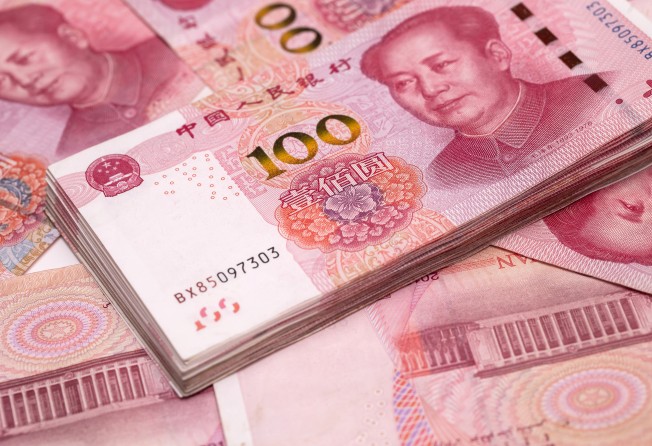China’s yuan dilemma: Beijing ‘faces a choice’ between cutting rates and a weakening currency
- Depreciation pressure on the yuan may constrain China’s ability to expand monetary policy in the second half of the year, say experts
- Combination of slowing growth in China and a strong dollar due to aggressive US tightening predicted to weigh on the yuan outlook

The People’s Bank of China (PBOC) is walking a tightrope between monetary easing to shore up economic growth and keeping depreciation of the yuan “under control”, amid growing policy divergence with the United States and possible complaints from Washington about China’s weakening currency.
The US Federal Reserve’s aggressive rate hikes to rein in inflation this year have driven the US dollar stronger against many currencies. So far, it is up 9.5 per cent on the yuan, 13.7 per cent against the euro and 24.9 per cent on the yen.
As China’s economic growth sputters, Beijing has reason to expand fiscal and monetary policies in the second half of the year. But the PBOC may be concerned about cutting interest rates too low, given the widening yield differential between China and the US, analysts said.
“The US is raising rates, if China’s monetary policy continues to ease, naturally there will be more depreciation pressure on the yuan, there may form some constraints to monetary policy. But so far, I don’t think the constraint is too significant,” said Xu Gao, chief economist of Bank of China International in a blog post published by CF40 Forum last week.
Liang Zhonghua, macro analyst at Haitong Securities, said the PBOC is likely to maintain its easing stance, while keeping depreciation of the yuan “under control” by deploying tools such as the foreign exchange reserve requirement ratio and capital control measures.
“But in the medium to long term, China is still facing the choice between interest rates and the foreign exchange rate,” Liang said in a note on Wednesday. “As such, if the depreciation pressure is growing, the easing of monetary policy will see some constraint.”
On Monday, the PBOC said it would cut the foreign exchange reserve requirement ratio to 6 per cent from 8 per cent, effective September 15, in an attempt to slow the slide of the yuan.
The central bank has also sent signals it wants to see a stronger yuan against the US dollar by setting the currency’s daily midpoint rate firmer of late.
“The PBOC is unlikely to offset the strong US$ tone completely but it is expected to smooth out excessive volatility,” said Charles Lay, foreign exchange and emerging market analyst at Commerzbank in a note on Wednesday.
“The combination of growth concerns in China and a strong dollar due to the aggressive tightening of US monetary policy continue to weigh on the yuan outlook.”
Mark Sobel, US chairman of the Official Monetary and Financial Institutions Forum, said China has been trying to resist depreciation of the yuan before it dips below the key threshold of 7 per US dollar.
Beijing’s management of the yuan could fuel long-standing suspicion in the US and elsewhere in the world that it is using the currency to gain competitive advantage, he said.
“While authorities often suggest they have their eyes focused on the yuan’s trade-weighted index, it seems they also keep a close eye on the dollar as well,” said Sobel, a former US Treasury official, in a blog post on Monday.
“This means that when the dollar is rising, the yuan falls against the dollar, but less so than others – often China’s competitors.
“While voices have been so far muted about the yuan weakening, a renewed cycle of complaints about Chinese currency practices – even if wide of the mark – is within the realm of possibility.”
Meanwhile, China’s foreign-exchange reserves fell significantly in August as prices of global financial assets plunged amid the strengthening dollar.
The country’s foreign exchange holdings stood at US$3.055 trillion at the end of August, down US$49.18 billion from a month earlier, according to data released by the State Administration of Foreign Exchange on Wednesday.